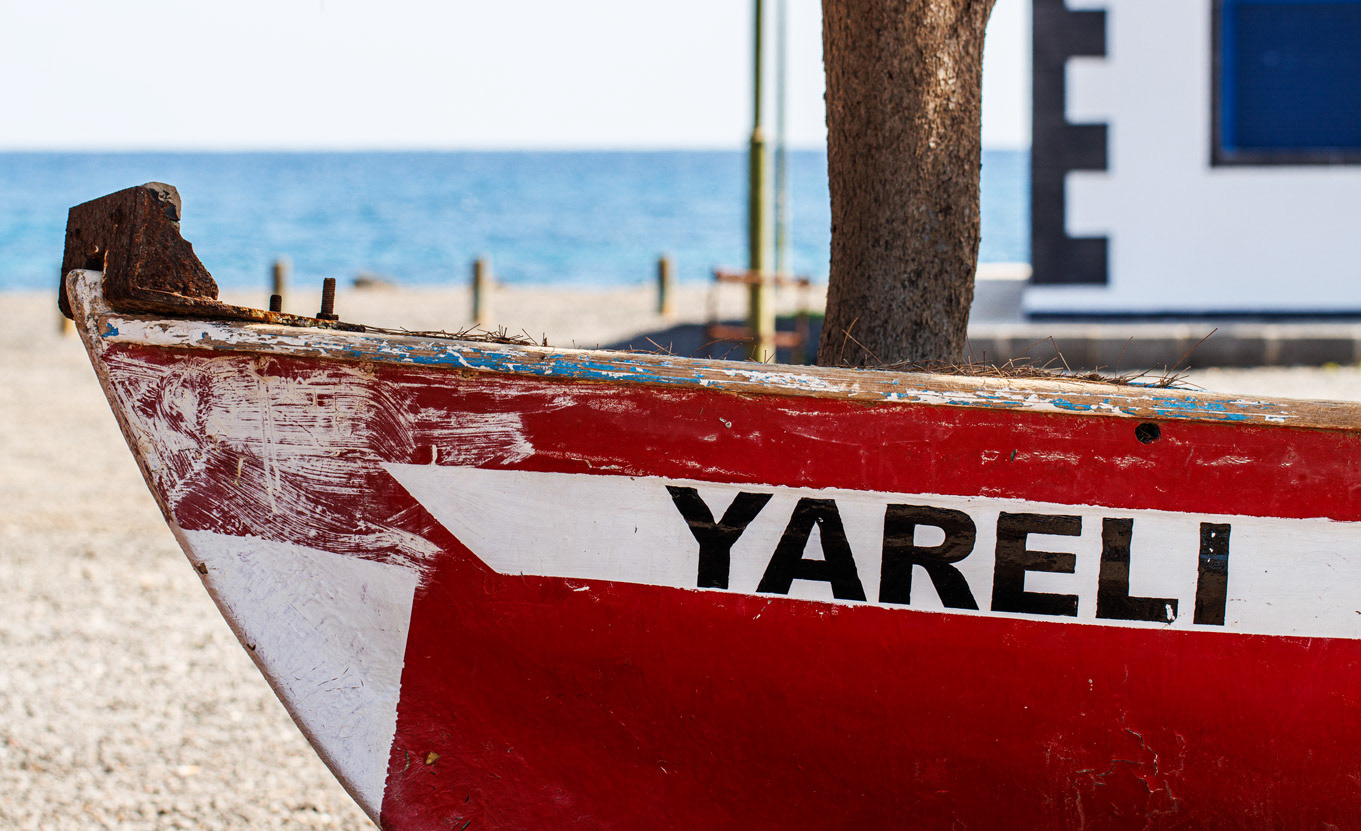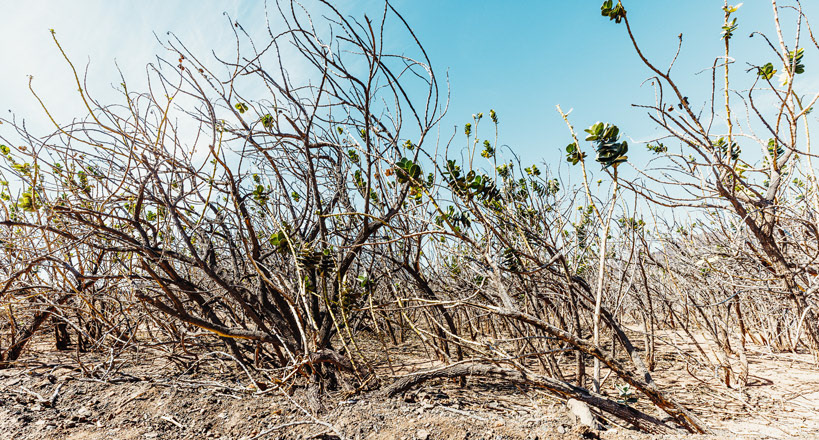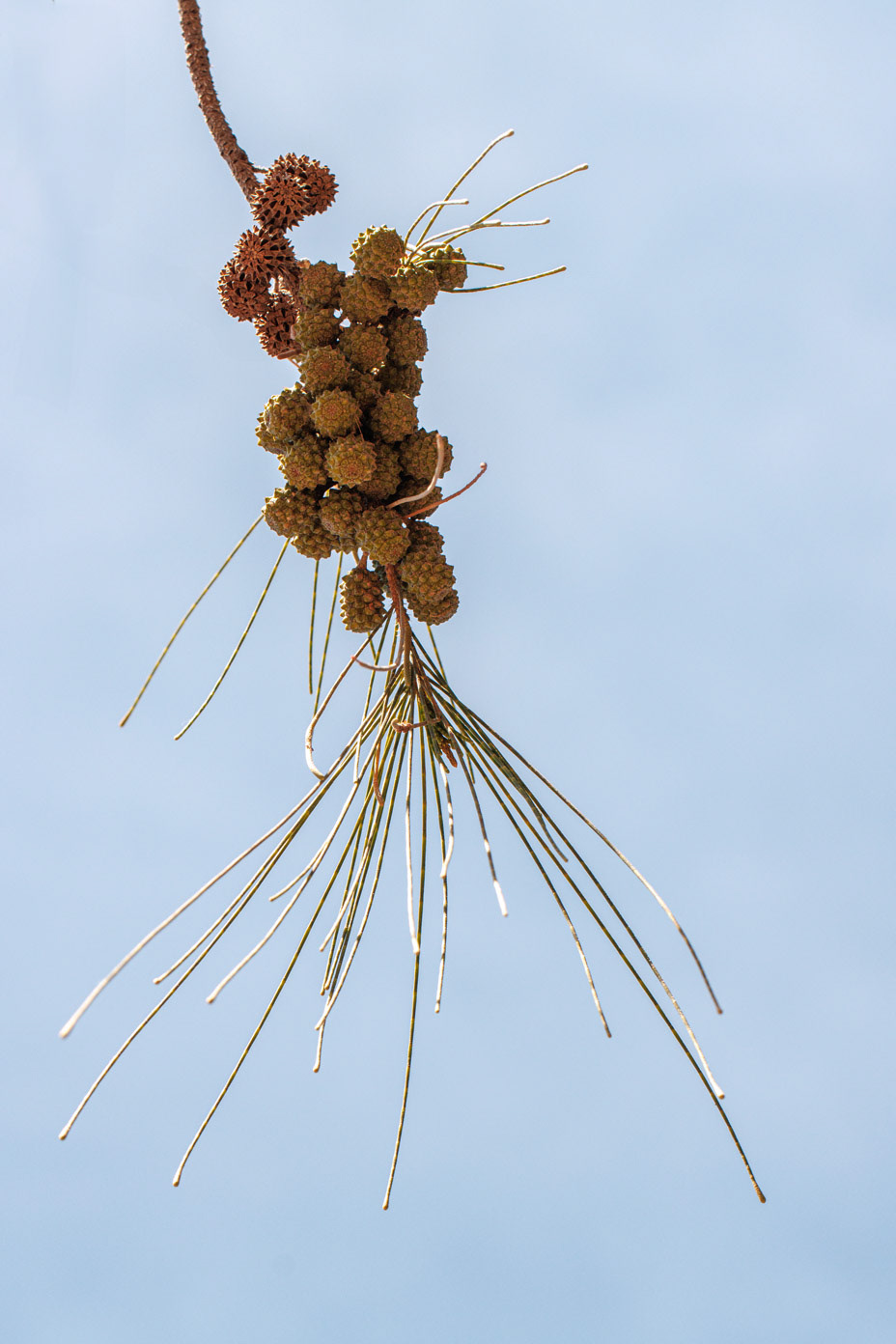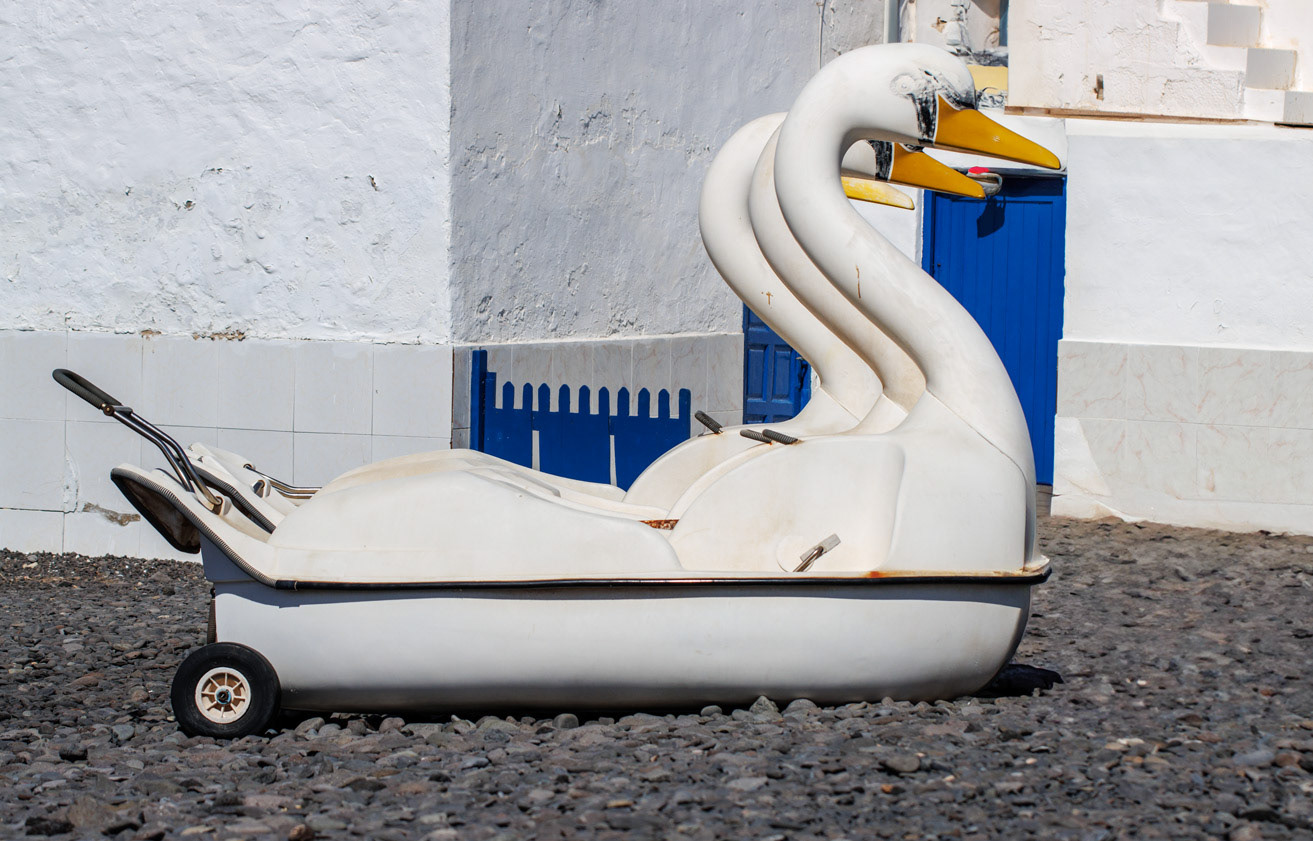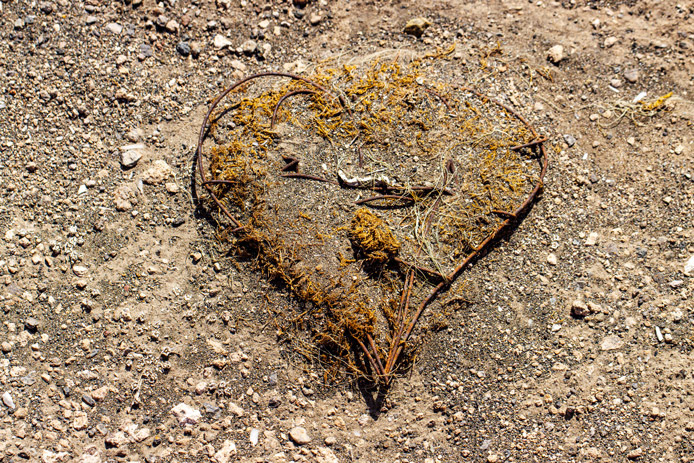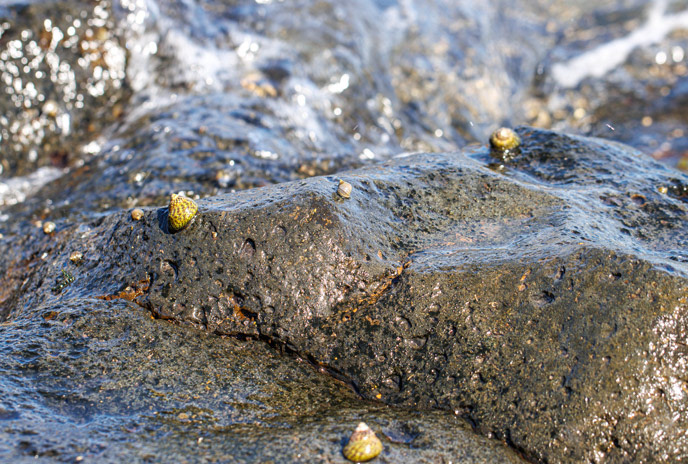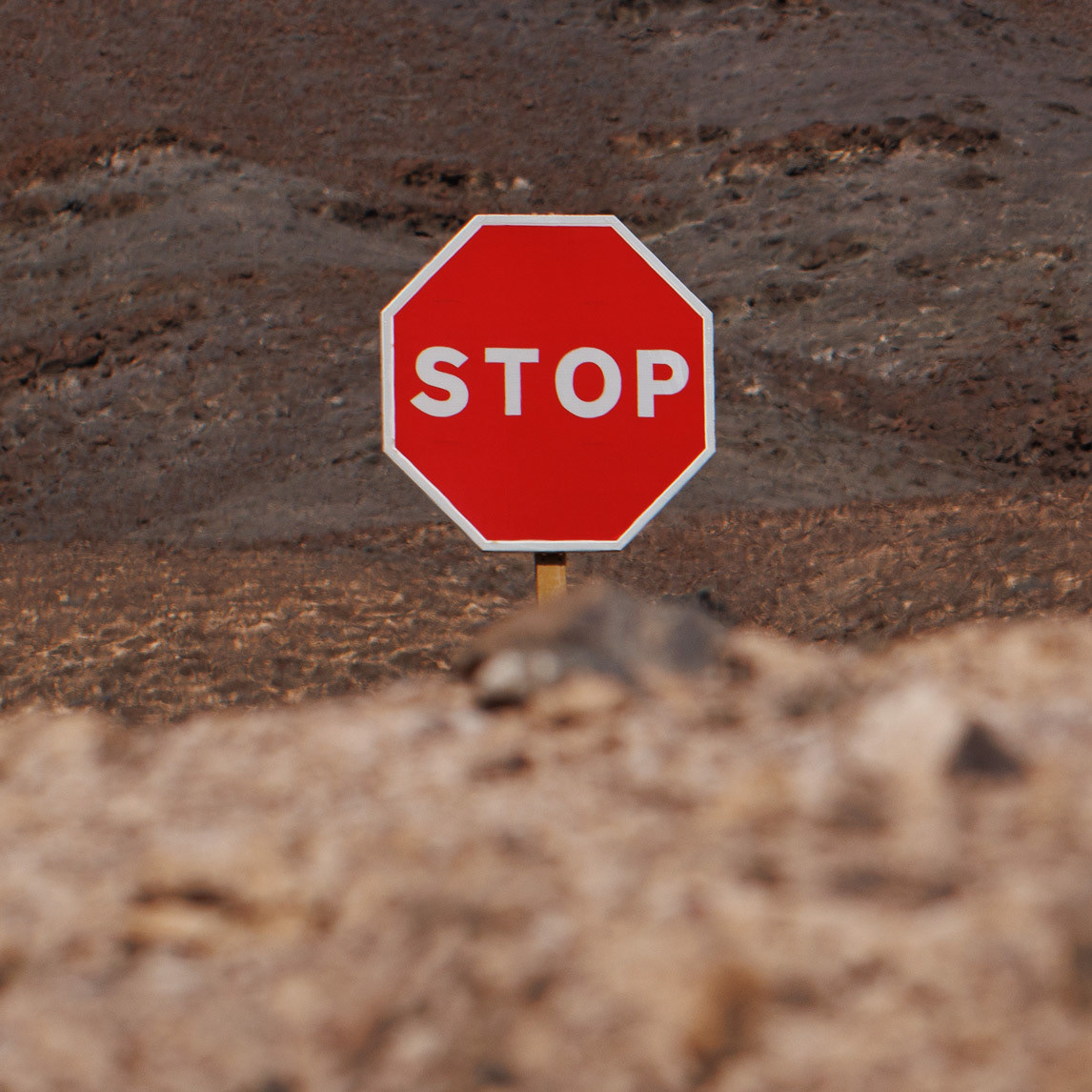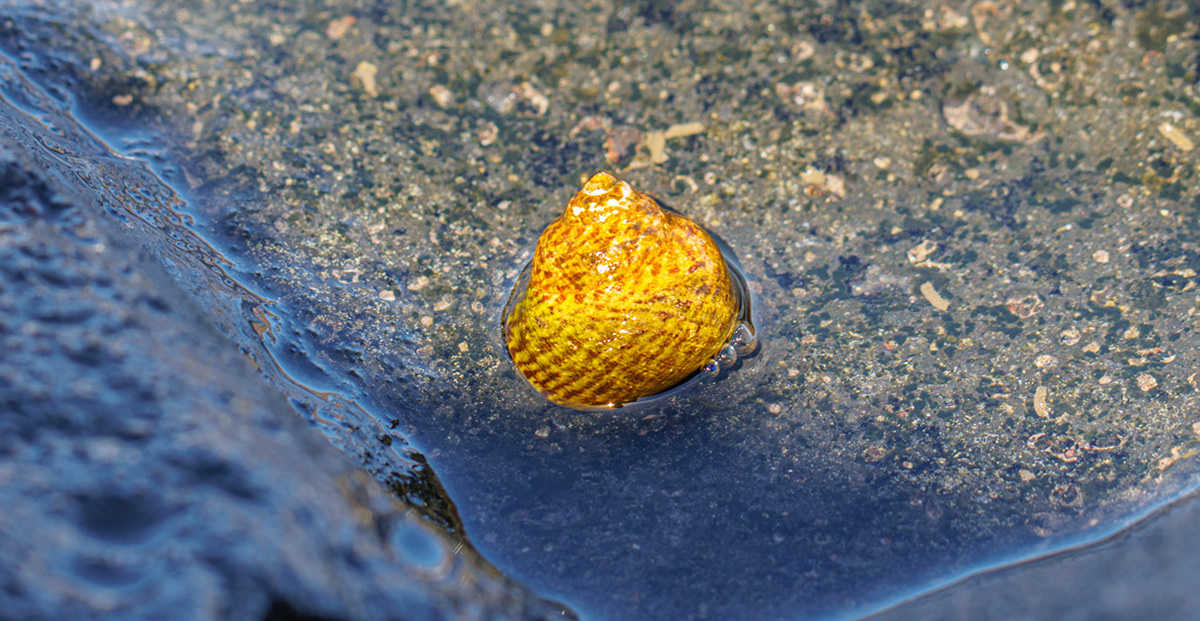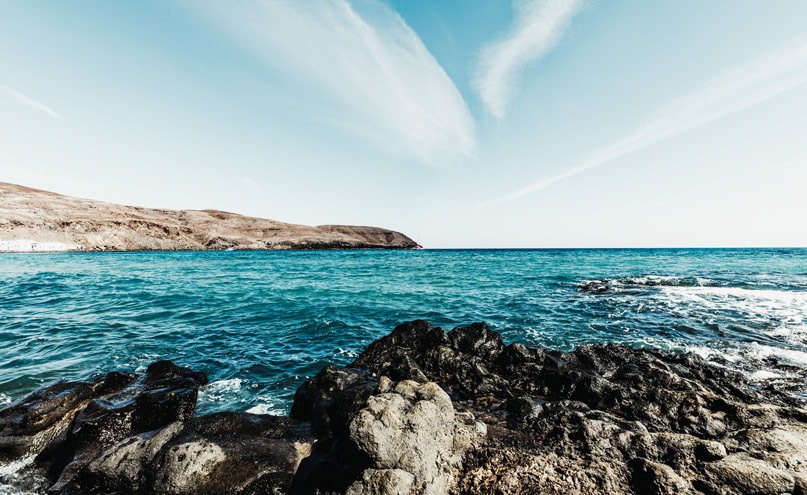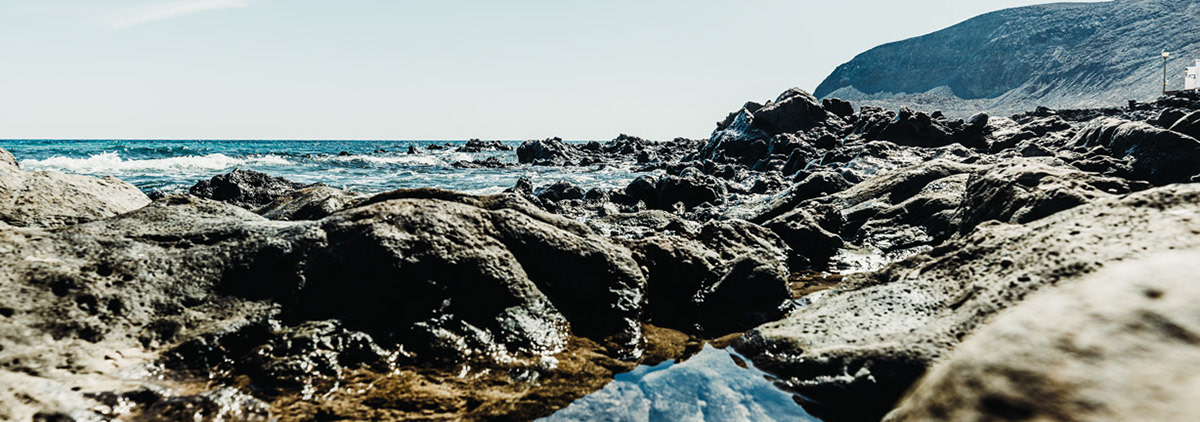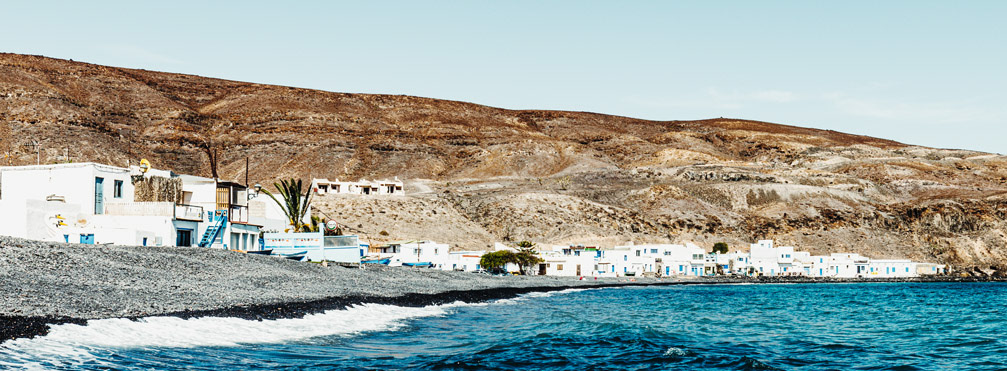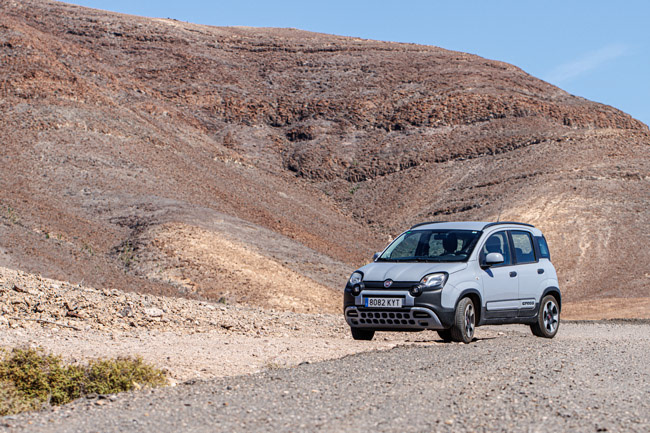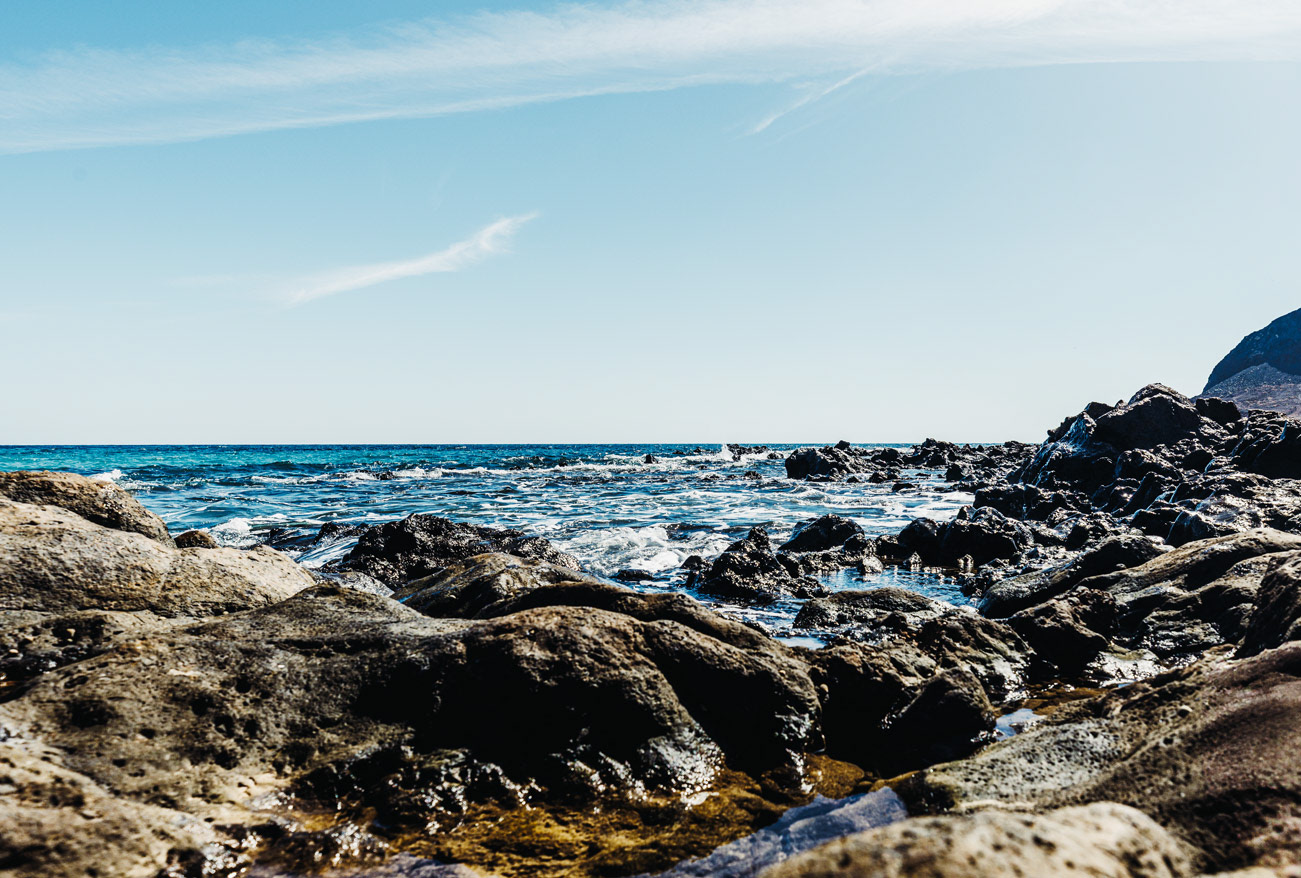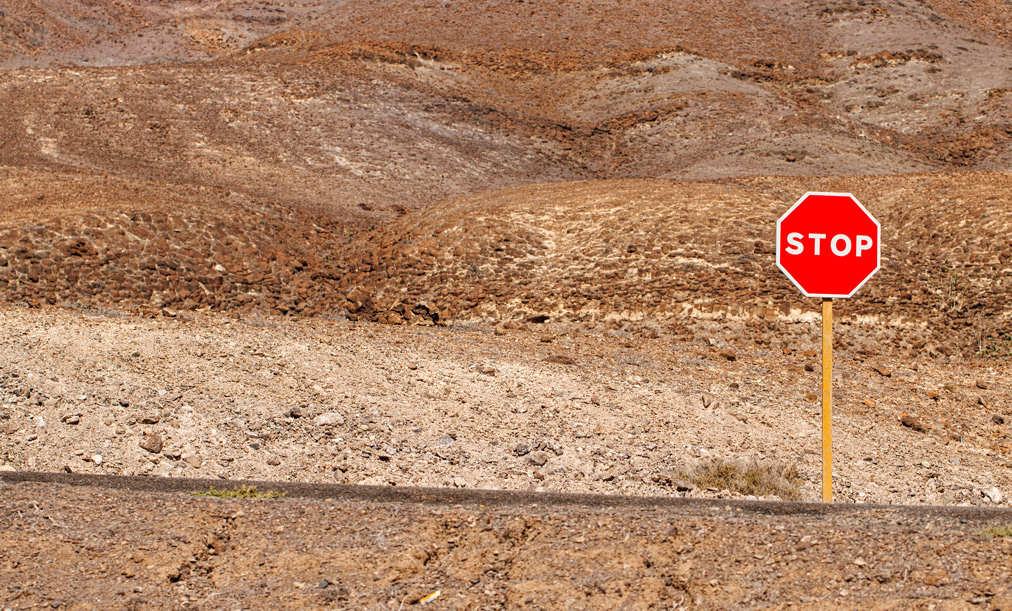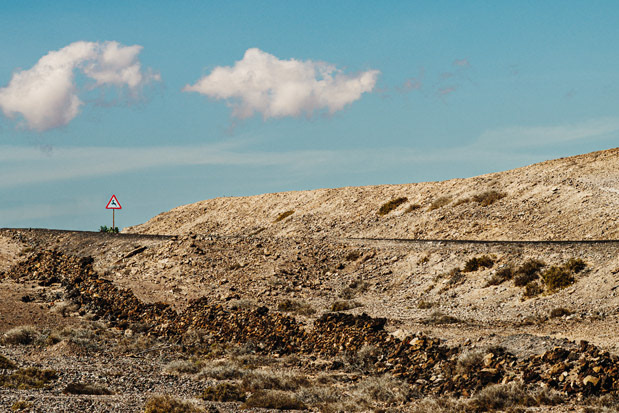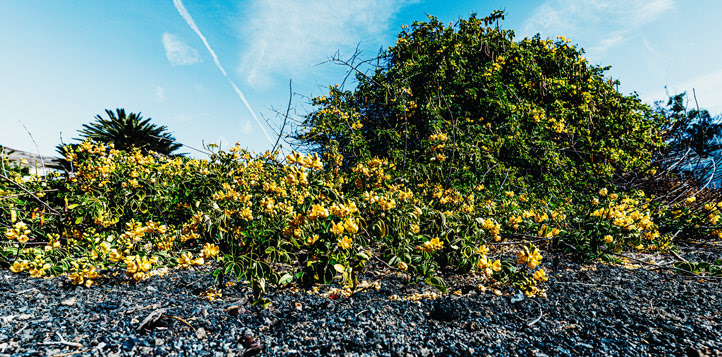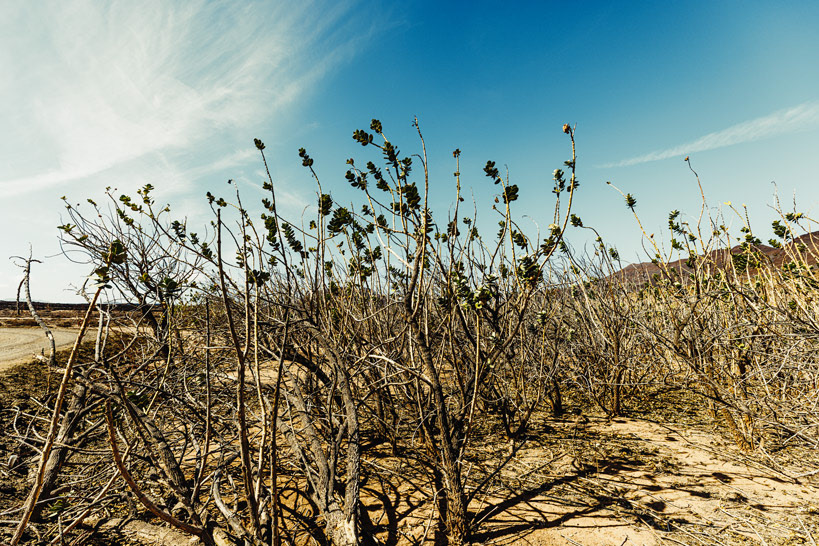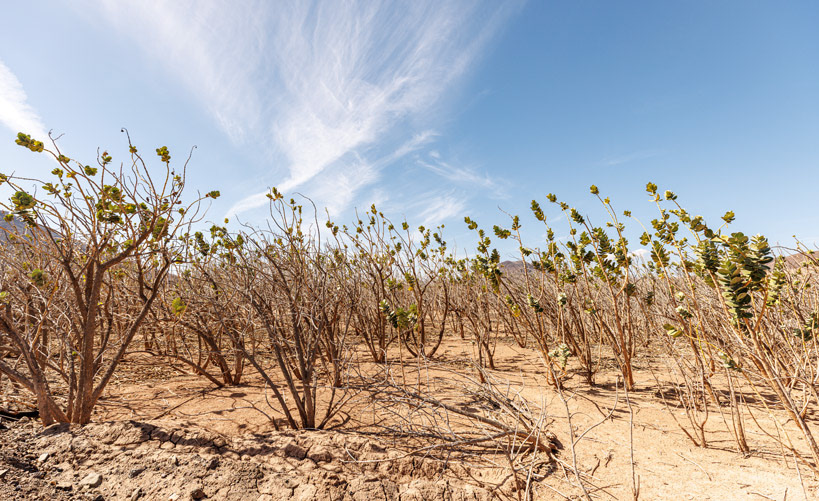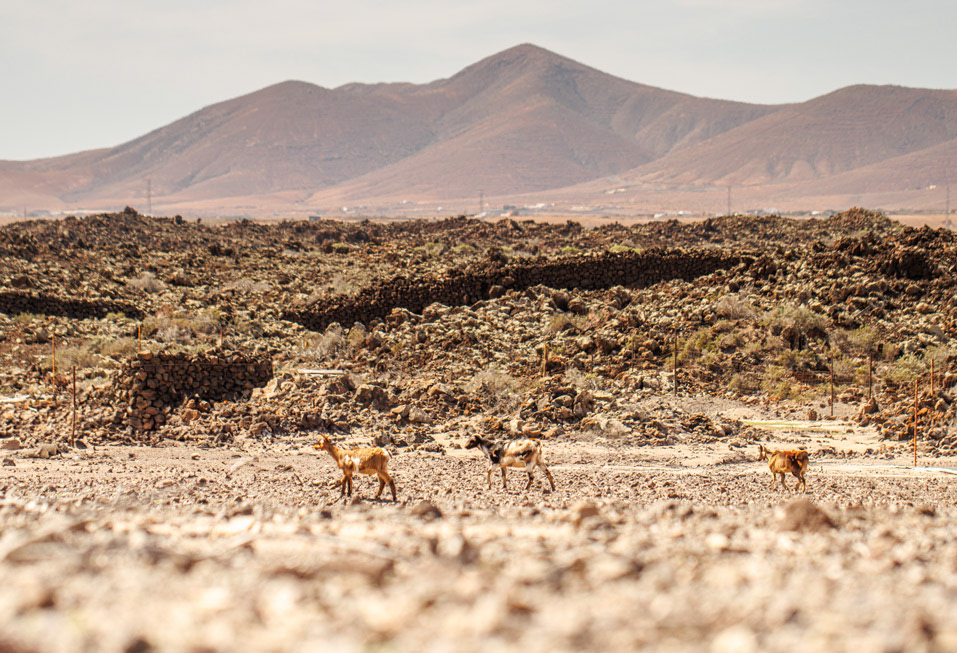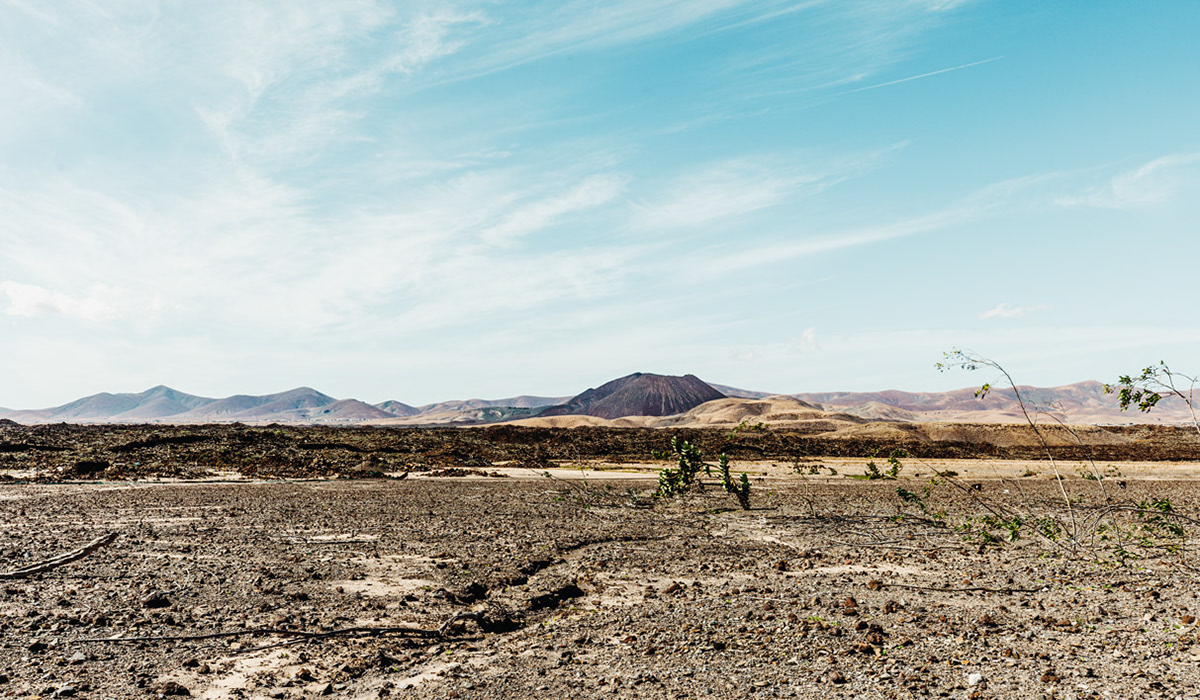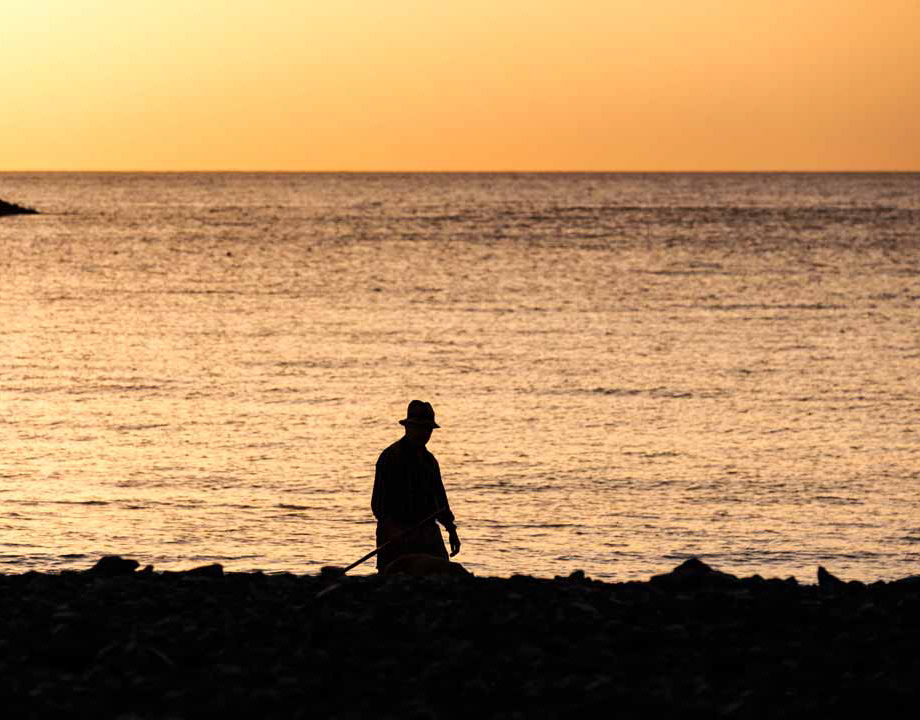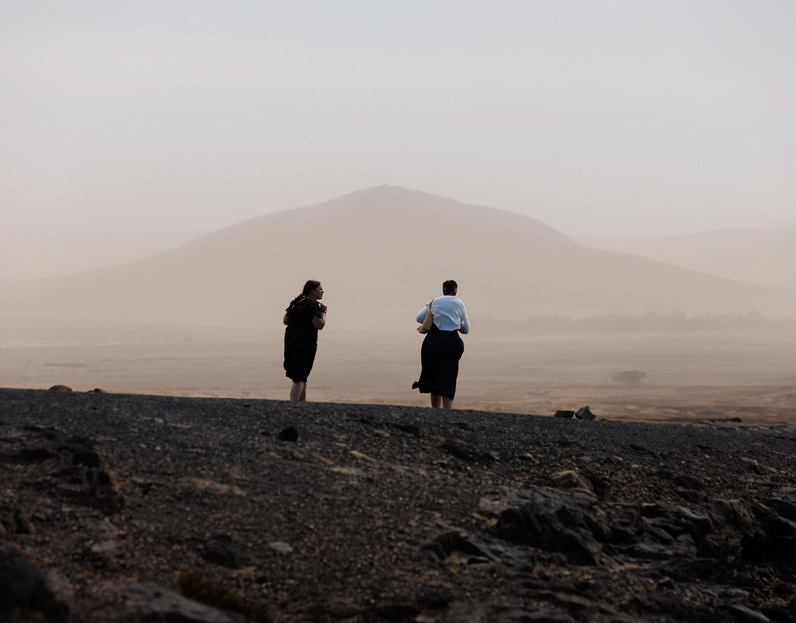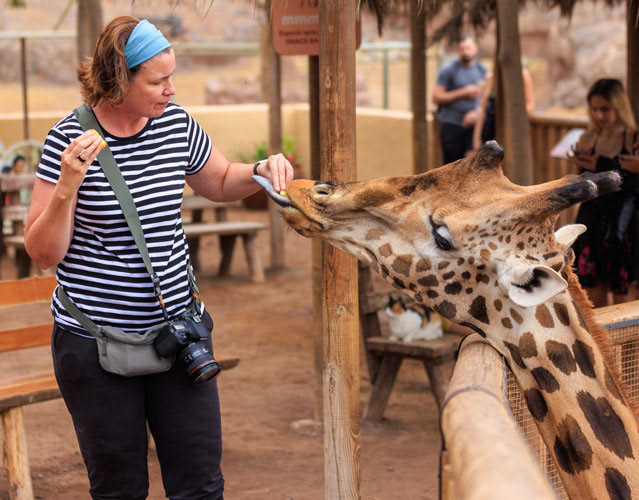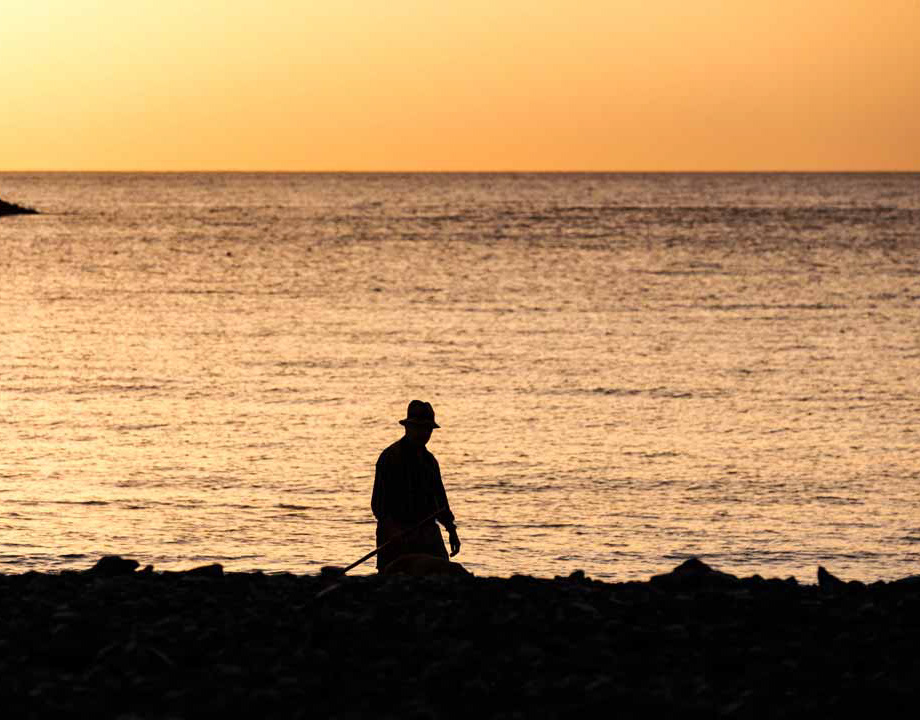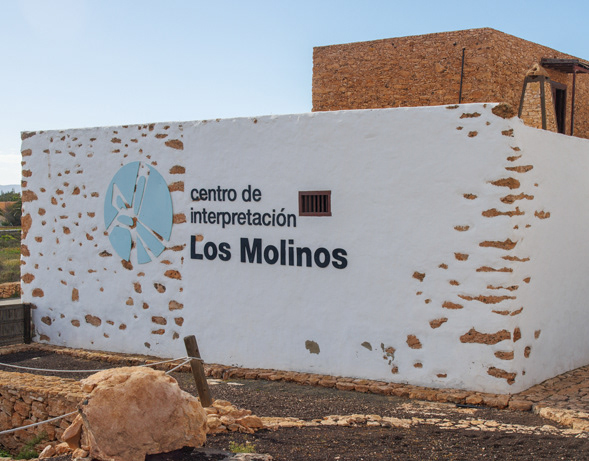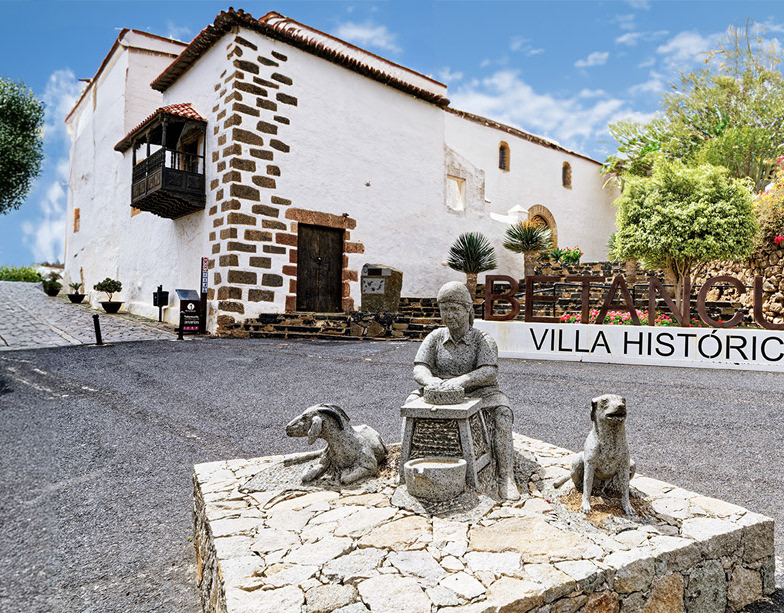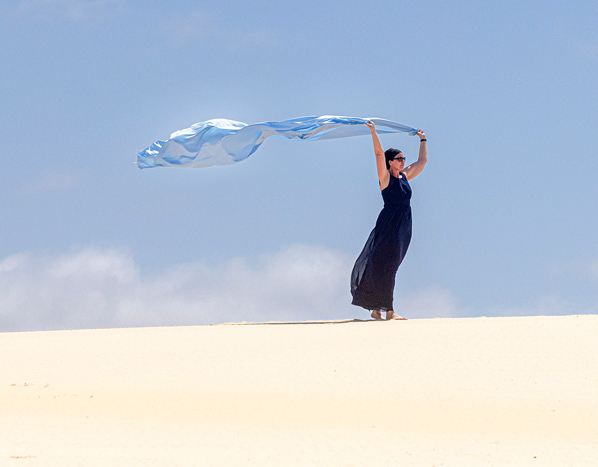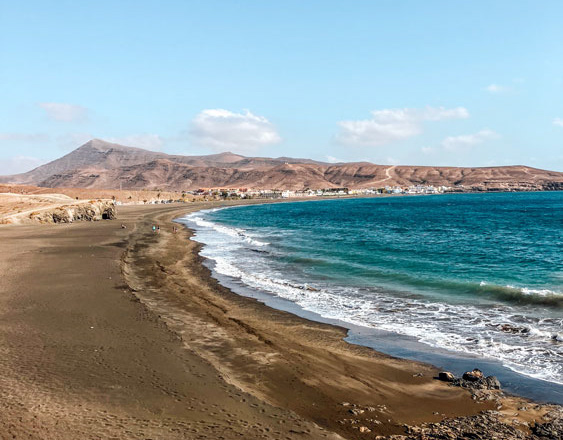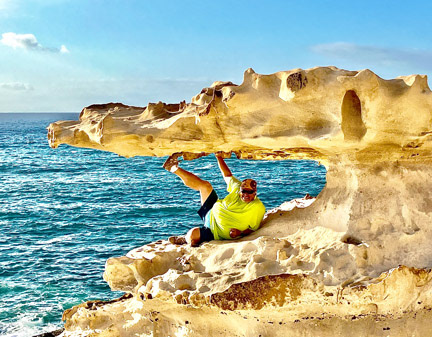Drone flight over the Caldera de la Laguna, the Malpaís Grande to the Poblado de la Atalayita.
In the Shadow of the Volcano – A Day Between Past and Eternity
Today's tour takes us through the traces of immense natural forces: from the dark Malpaís Grande, past the abandoned Poblado de la Atalayita, to the venerable fishing village of Pozo Negro – all shaped by the ancient power of the Caldera de la Laguna volcano. These places silently tell of a time when fire and lava sculpted the contours of Fuerteventura, laying the foundation for the island's unique, melancholic beauty.
I sit on a massive lava rock and let the impressions of the day resonate within me. A salty wind brushes against my skin, carrying the scent of the sea, mixed with the dry smell of hot stone. The sun's rays warm my shoulders, but the dark volcanic rock hints that this island also has a harsher side.
It was a day full of quiet moments, where every fiber of my being felt both the transience and the unshakable force of nature. The day began with a heavy, almost reverent feeling as we set out towards the Caldera de la Laguna.
Before me rises a massive, dark crater. The deep black rock seems to whisper stories of long-forgotten times. I inhale the cool, dry air and listen to the wind softly brushing against the jagged rocks. Every stone holds a memory – of infernos, of upheavals that shaped this place. It feels as if the Earth itself has spoken in its silent language, and I can only listen in stillness.
Beside me, already eagerly preparing the drone for takeoff, stands my loyal companion in life's fiery adventures. He never fails to bring a smile to my face.
"Look, a herd of sheep in the crater!" Helmuth exclaims excitedly.
He turns to me, the drone's remote control in hand. The drone hovers – but a gust of wind suddenly pushes it sideways. Helmuth frowns, glancing at the screen, then at the sky, then back at the screen. For a moment, it looks like he might have to chase after it himself. I laugh. He doesn't. Not yet.
After the Caldera de la Laguna, our path takes us across the Malpaís Grande – an endless expanse of solidified lava. The sight is both impressive and deeply melancholic. Before us lies a landscape shaped by the Earth's primal forces, a silent witness to past times.
At its heart lies the 15th-century Maho settlement, the Poblado de la Atalayita. The remnants of the ancient dwellings rest abandoned and still, as if time had forgotten them. I close my eyes and imagine how the indigenous people once lived here. What was it like to sleep in these barren stone huts? At night, when the wind howled through the ravines, when no fire could chase away the shadows? How did it feel to have nature as both friend and foe? I run my fingers over the old lava stones, as if hoping to catch a spark of those long-lost lives.
In the afternoon, our journey continues from the Malpaís down to the shore, where the elements have left their final marks. There, standing alone, is an SOS column – a silent reminder that the Atlantic is wild, unpredictable, and must be treated with respect.
Pozo Negro, an old fishing settlement, seems almost frozen in time. Surrounded by old, creaking boats dozing in the shade of trees, the village tells stories of stormy nights and brave seafarers. In the bay, a modern sailing catamaran gently sways in the waves.
On the jagged lava rocks of the Malpaís, I discover something that once again captures my attention: tiny sea snails, slowly making their way across the rough surface. I kneel down and watch them, fascinated by their tenacity and relentless instinct for survival. In this small, seemingly insignificant moment, I feel closer than ever to the vastness and silent wonder of nature. The contrasts are overwhelming – the rough rock, the gentle play of the waves, and the sky in cool hues that make one forget the scorching sun. I feel small and yet infinitely connected to this place, as if each moment holds an eternity within it.
During a brief walk through the village, we discover a crowded bar – the perfect spot to enjoy a cold beer while gazing at the endless sea. A small, makeshift "camping site," nestled between the barren landscape and a children's playground with a barbecue area, speaks of the joy and carefree spirit that, despite the harsh nature, are possible here. Not far away, hidden between rocks and gentle hills, are small houses. They seem almost from another time, their windows silently gazing into the distance. A quiet melancholy lingers in the air, as if time has stood still here while the world outside moves on relentlessly. The people live in harmony with nature, every step, every gesture following a deep, timeless rhythm.
The day draws to a close, and as we sit on the beach, listening to the sound of the waves, a sense of inner peace washes over me. Flowers and plants bloom, solitary and forgotten, while the setting sun paints the sky in fiery red. Helmuth, still busy with his camera and occasionally laughing at his own clumsiness, takes a few last shots before leaning back and letting his gaze drift over the endless ocean.
I came here to see a landscape – but I leave with the feeling of having touched a fragment of this island's soul. The solitude of these places is not emptiness, but an invitation to look inward. Fuerteventura speaks softly – one just has to learn to listen.

